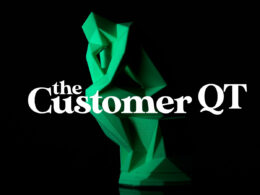“likes” and “tweets” have become surrogates for real ROI and where, unfortunately, in the rush to rush to something new, the brand often gets left behind.
Robert Passikoff, CEO of Brand Keys
Napoleon Bonaparte advised, “Never interrupt your enemy when he blunders.” That was at the “Battle of Austerlitz.” Which he won, so it should probably go on the “Things Napoleon Said We Should Probably Listen To” list. In that instance the “enemy” were the Russians and Austrians. On the other hand, if your “enemy” is a competitive brand, avoiding blunders is good basic training for today’s marketplace battle.
It’s a different field of battle today with different ordnance. Marketers are deploying the newest digital weaponry like AI, multi-channel social, and ChatGPT, with brand-based indoctrination and messaging coded to tell stories, entertain, and create awareness instead of differentiating, engaging, and motivating. Where “likes” and “tweets” have become surrogates for real ROI and where, unfortunately, in the rush to rush to something new, the brand often gets left behind.
When that happens, errors occur. Well, more than errors. More like blunders – big blunders. Because in a more complex, consumer gate-kept marketplace, with consumers hotwired to mobile devices and sky-high expectations, the reality is, it isn’t if, but when a brand is going to blunder.
When it came to blunders, Emerson (Ralph Waldo) suggested,” You forget them as soon as you can.” OK, let’s call that “Plan B.” Hope is not a strategy. Forgetting is not a strategy. Hoping you’ll forget even more so not a strategy!
“Plan A” recognizes brand blunders can have a significant negative impact on customer loyalty and engagement, satisfaction, and behavior. And when a brand blunders it erodes brand trust. Lack of trust leads consumers to question whether they want to do or continue to do business with that brand. So, kind of the opposite of building loyalty.
Brand blunders are antithetical to loyalty by causing customers to feel the brand doesn’t care about their needs. More precisely, that the brand doesn’t understand how they feel – that the brand doesn’t understand what they expect. And if you don’t understand what your consumers expect, you can’t possibly understand what you need to do to meet those expectations. And that’s a real blunder.
You see, expectations are mostly emotional and make up the greater part of the consumer decision-process. Currently emotions are estimated to be 75% of that process. And while the rational stuff represents the rest, let us not forget there are a raft of rational bungles a brand can blunder into – like a badly-designed product or no value-for-dollar, or having poor distribution or service, or just plain bad positioning or even worse – messaging. All of those are indicators that the brand doesn’t really understand what consumers really expect. Missing those expectations has tangential effects on engagement, outreach, involvement, promotion, likes, etc. etc. – you know, the stuff a lot of brands use as proxies for actual ROI.
So how many times can a brand blunder before customers desert? Well, it depends on a variety of factors like category, customer, expectation levels, and degree of blunder. And how loyal customers are to begin with. That’s when loyalty’s Rule of Six kicks in. For new readers of this column, The “Rule of Six” is made up of a set of independently-validated brand corollaries that go, “Loyal consumers are six time more likely to (INSERT REALLY GOOD OUTCOMES HERE).”
In this instance the really-good-outcome that applies goes, “. . . are six times more likely to give the brand the benefit of the doubt in uncertain circumstances (or when it blunders).” The best example (or worst, depending upon your personal proclivities) of “blunders” I can give as an example are poisonings. I mean, you can’t blunder much worse than poisoning your own customers, right? “Uncertain circumstances” is a pretty charitable euphemism for that, I think you’ll agree!
The textbook case is Tylenol laced with potassium cyanide. And sure, at the time, the market share of Tylenol dropped. But in fairness there are very few customers so loyal that they’re willing to die for a brand. And “death” in place of “pain relief” is kind of the opposite of meeting expectations. But Tylenol exceeded customers’ expectations à la “safety” by inventing a triple-sealed, tamper-proof package – the first of its kind. Oh, and it became the most popular OTC analgesic in the US.
Or there’s Chipotle and the kind of engagement where consumers did risk death. The brand survived seven outbreaks of E. coli bacterium and salmonella-related poisonings before the blunder well of forgiveness ran dry and its market share disappeared. That’s why it’s called “The Rule of Six,” and not “The Rule of Seven.”
And for the record, I’m a big fan of history, but not of 20:20 hindsight. So, despite the fact that any blunder committed in the past opens an avenue for the success in the future, a good loyalty-marketing-engagement Rule of Thumb is “Don’t blunder.”
Which is a really good rule because, as Miguel de Cervantes noted, “To be prepared is half the victory.”
But to know what consumers expect, that’s the other half.
That was me.
Photo by Alexas_Fotos on Unsplash













Once again Robert provides excellent overview and advice. It all gets back to the customer centric world we now live in, that customers expect brand personalization, and relationshipping is key. That relationship is like a garden, it needs constant tending, the weeds need to be taken out, and allow nothing that would be poison in this space.